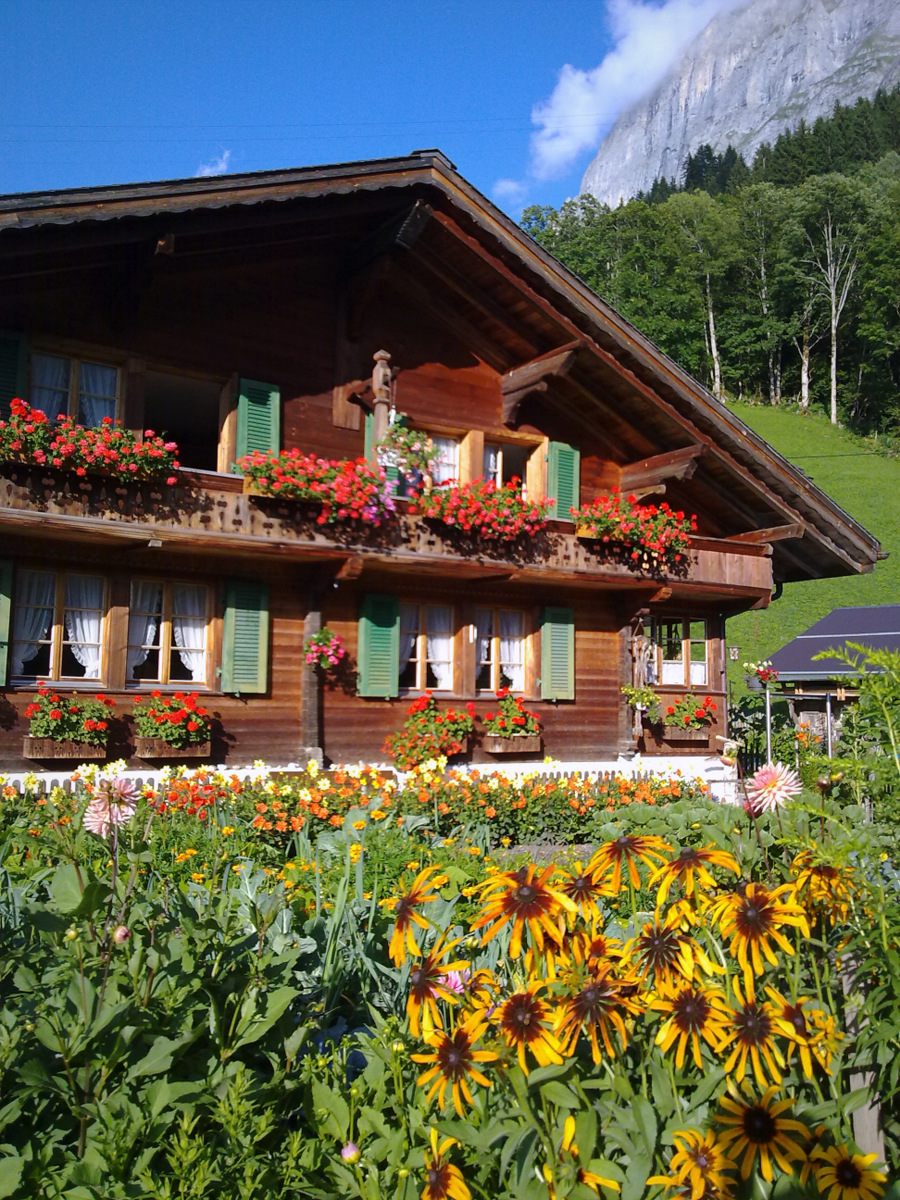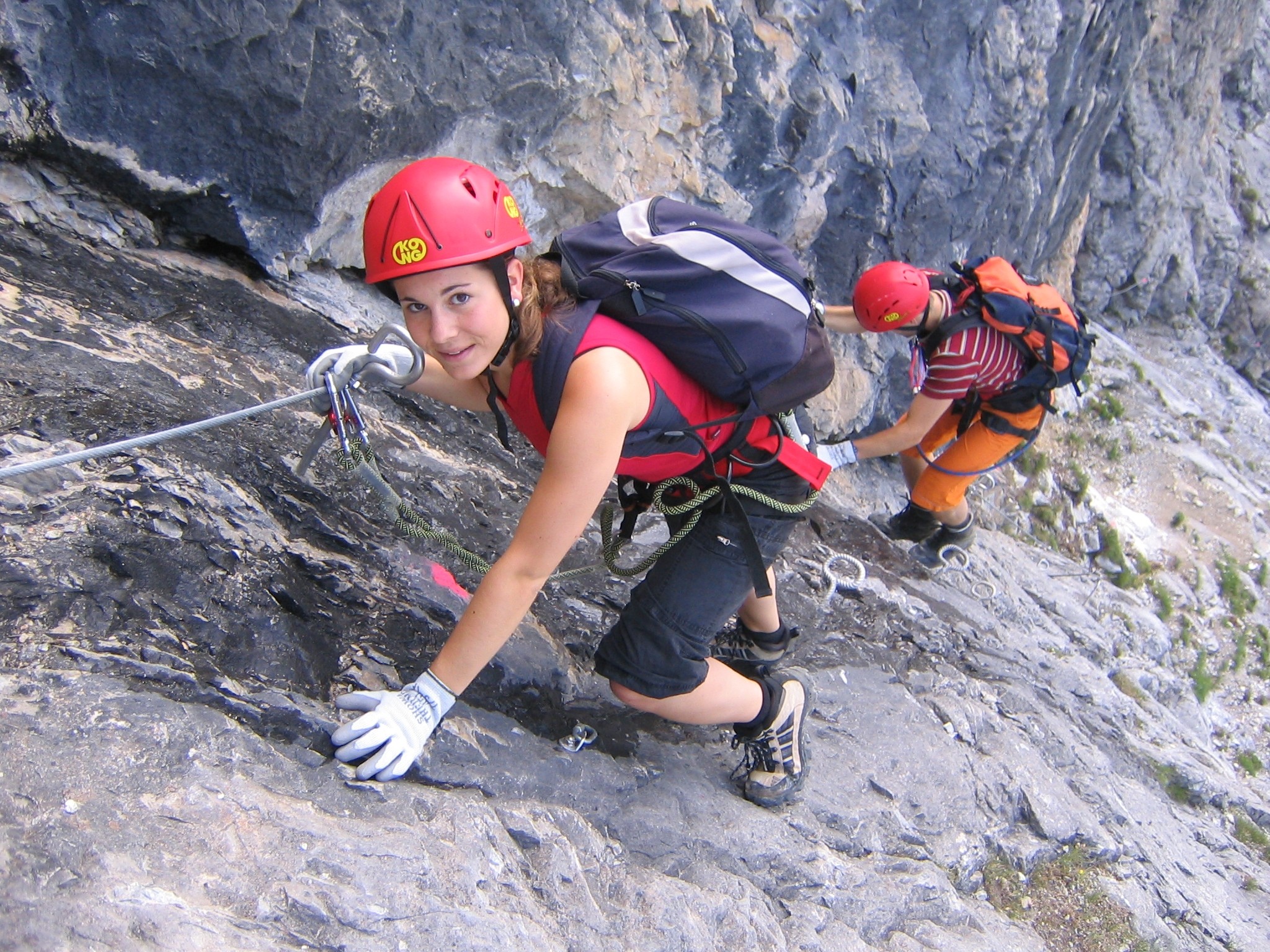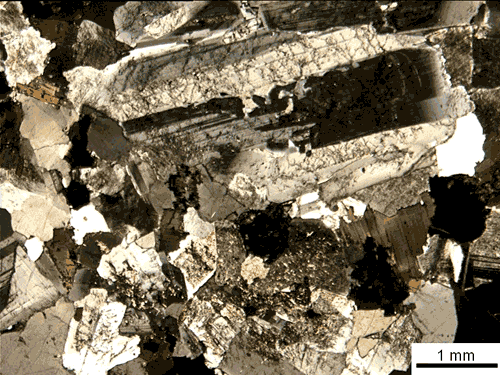|
Orla Perć
Orla Perć ( English: ''Eagle's Path'') is a tourist path in the Tatra Mountains in southern Poland. It is considered one of most difficult and dangerous public paths in the entire Tatras (an equivalent to Grade 2 Scramble) and is therefore a suitable route only for experienced climbers. The path is marked with red signs. Since it was established, at least 112 people have lost their lives on the route. Technical data The route is located in the centre of the High Tatras. The total length of the accessible route is 4.5 km. Total walking time (summer, depending on trails conditions) varies between 6 and 8 hours. The highest point is Kozi Wierch at 2291 m AMSL. The path starts at Zawrat pass (2159 m AMSL) and finishes at Krzyżne pass (2112 m AMSL), leading through several peaks and traversing others. The path is exposed, leading mostly along the mountain ridge. Numerous aids for tourists are provided at the most steep and vertical stretches, including ladders, stepladder ... [...More Info...] [...Related Items...] OR: [Wikipedia] [Google] [Baidu] |
Tatra Mountains
The Tatra Mountains (), Tatras, or Tatra (''Tatry'' either in Slovak () or in Polish () - '' plurale tantum''), are a series of mountains within the Western Carpathians that form a natural border between Slovakia and Poland. They are the highest mountains the Carpathians. The Tatras are distinct from the Low Tatras ( sk, Nízke Tatry), a separate Slovak mountain range further south. The Tatra Mountains occupy an area of , of which about (77.7%) lie within Slovakia and about (22.3%) within Poland. The highest peak, called Gerlachovský štít, at 2,655 m (8710 ft), is located north of Poprad, entirely in Slovakia. The highest point in Poland, Rysy, at 2,499 m (8200 ft), is located south of Zakopane, on the border with Slovakia. The Tatras' length, measured from the eastern foothills of the ''Kobylí vrch'' (1109 m) to the southwestern foot of ''Ostrý vrch'' (1128 m), in a straight line, is (or according to some), and strictly along the main rid ... [...More Info...] [...Related Items...] OR: [Wikipedia] [Google] [Baidu] |
Chalet
A chalet (pronounced in British English; in American English usually ), also called Swiss chalet, is a type of building or house, typical of the Alpine region in Europe. It is made of wood, with a heavy, gently sloping roof and wide, well-supported eaves set at right angles to the front of the house. Definition and origin The term ''chalet'' comes from the Arpitan-speaking part of Switzerland and the French Savoy region, and originally referred to the hut of a herder. It was often embedded in the ground for the sake of temperature buffering. Many chalets in the European Alps were originally used as seasonal farms for dairy cattle, which would be brought up from the lowland pastures during the summer months. The herders would live in the chalet and make butter and cheese in order to preserve the milk produced. These products would then be taken, with the cattle, back to the low valleys before the onset of the alpine winter. The chalets would remain locked and unused during ... [...More Info...] [...Related Items...] OR: [Wikipedia] [Google] [Baidu] |
Mountain Ranges Of Poland
A mountain is an elevated portion of the Earth's crust, generally with steep sides that show significant exposed bedrock. Although definitions vary, a mountain may differ from a plateau in having a limited summit area, and is usually higher than a hill, typically rising at least 300 metres (1,000 feet) above the surrounding land. A few mountains are isolated summits, but most occur in mountain ranges. Mountains are formed through tectonic forces, erosion, or volcanism, which act on time scales of up to tens of millions of years. Once mountain building ceases, mountains are slowly leveled through the action of weathering, through slumping and other forms of mass wasting, as well as through erosion by rivers and glaciers. High elevations on mountains produce colder climates than at sea level at similar latitude. These colder climates strongly affect the ecosystems of mountains: different elevations have different plants and animals. Because of the less hospitable terrain and ... [...More Info...] [...Related Items...] OR: [Wikipedia] [Google] [Baidu] |
Tourism In Poland
Poland is a part of the global tourism market with constantly increasing number of visitors. Tourism in Poland contributes to the country's overall economy. The most popular cities are Kraków, Warsaw, Wrocław, Gdańsk, Poznań, Szczecin, Lublin, Toruń, Zakopane, the Salt Mine in Wieliczka and the historic site of Auschwitz – A German Nazi concentration camp in Oświęcim. The best recreational destinations include Poland's Masurian Lake District, Baltic Sea coast, Tatra Mountains (the highest mountain range of Carpathians), Sudetes and Białowieża Forest. Poland's main tourist offers consist of sightseeing within cities, historical monuments, natural monuments, business trips, agrotourism, bicycle touring, qualified tourism, mountain hiking ( trekking) and climbing among others. Overview In the 21st century, Poland is one of the safest countries in Europe, frequently visited by tourists. Poland, especially after joining the European Union in 20 ... [...More Info...] [...Related Items...] OR: [Wikipedia] [Google] [Baidu] |
Tatrzańskie Ochotnicze Pogotowie Ratunkowe
Tatra Volunteer Search and Rescue ( pl, Tatrzańskie Ochotnicze Pogotowie Ratunkowe (TOPR)) is a non-profit mountain rescue organization in Poland, rescuing stranded mountain climbers, tourists, and others in need of rescue in the Polish Tatra mountains. It is one of the oldest mountain rescue associations in the world. Each potential rescuer is required to complete a special training course (lasting between 1.5 and 3 years), in which every volunteer is to exhibit excellent knowledge in Tatra topography as well as practical abilities including climbing, skiing, spelunking, lifesaving and first aid. After completing the training the rescuer takes an oath on the director's hand. In 2011 TOPR consisted of around 250 members, 140 of whom had acquired permission to participate in rescue missions. The majority of the rescuers are volunteers; only 33 are professional rescuers. TOPR is one of the few organizations in the world that does not require a mountain insurance policy and does no ... [...More Info...] [...Related Items...] OR: [Wikipedia] [Google] [Baidu] |
Via Ferrata
A via ferrata ( Italian for "iron path", plural ''vie ferrate'' or in English ''via ferratas'') is a protected climbing route found in the Alps and certain other locations. The term "via ferrata" is used in most countries and languages except notably in German-speaking regions, which use ''Klettersteig''—"climbing path" (plural ''Klettersteige''). Infrastructure A via ferrata is a climbing route that employs steel cables, rungs or ladders, fixed to the rock to which the climbers affix a harness with two leashes, which allows the climbers to secure themselves to the metal fixture and limit any fall. The cable and other fixtures, such as iron rungs (stemples), pegs, carved steps, and ladders and bridges, provide both footings and handholds, as well. This allows climbing on otherwise dangerous routes without the risks of unprotected scrambling and climbing or the need for technical climbing equipment. They expand the opportunities for accessing difficult peaks as an alternative ... [...More Info...] [...Related Items...] OR: [Wikipedia] [Google] [Baidu] |
Tatra National Park, Poland
Tatra National Park ( pl, Tatrzański Park Narodowy; abbr. TPN) is a National Park located in the Tatra Mountains in Tatra County, in the Lesser Poland Voivodeship—Małopolska region, in central-southern Poland.en.poland.gov: Tatra National Park . accessed 5.12.2013 The Park has its headquarters in the town of Zakopane. The Tatra Mountains form a natural border between Poland to the north and to the south, and the two countries have cooperated since the early 20th century on efforts to protect the area. Slovakia created an [...More Info...] [...Related Items...] OR: [Wikipedia] [Google] [Baidu] |
Franciszek Nowicki
Franciszek Henryk Siła-Nowicki (29 January 1864, in Kraków, Austrian Empire – 3 September 1935, in Zawoja, Poland) was a Young Poland poet, a mountaineer, socialist activist, and designer of the ''Orla Perć'' (Eagle's Path) High Tatras mountain trail. Life Franciszek Nowicki was the son of Maksymilian Nowicki — a zoologist and pioneer Polish conservationist — and Antonina Kasparek, sister of Franciszek Kasparek, professor of international law, rector of Kraków University, and founder of the first chair in international law in Poland. As a university student, Nowicki co-edited (with Kazimierz Tetmajer, Andrzej Niemojewski, Artur Górski and others) a socialist-leaning journal, '' Ognisko'' (Focus). Some years later, he co-founded the Polish Socialist-Democratic Party ('' Polska Partia Socjalistyczno-Demokratyczna''). From 1894 he taught at a secondary school ('' gimnazjum''). On February 5, 1901, Nowicki proposed to '' Towarzystwo Tatrzańskie'' (the Tatras So ... [...More Info...] [...Related Items...] OR: [Wikipedia] [Google] [Baidu] |
Avalanche
An avalanche is a rapid flow of snow down a slope, such as a hill or mountain. Avalanches can be set off spontaneously, by such factors as increased precipitation or snowpack weakening, or by external means such as humans, animals, and earthquakes. Primarily composed of flowing snow and air, large avalanches have the capability to capture and move ice, rocks, and trees. Avalanches occur in two general forms, or combinations thereof: slab avalanches made of tightly packed snow, triggered by a collapse of an underlying weak snow layer, and loose snow avalanches made of looser snow. After being set off, avalanches usually accelerate rapidly and grow in mass and volume as they capture more snow. If an avalanche moves fast enough, some of the snow may mix with the air, forming a powder snow avalanche. Though they appear to share similarities, avalanches are distinct from slush flows, Mudflow, mudslides, Landslide#Debris landslide, rock slides, and serac collapses. They are also ... [...More Info...] [...Related Items...] OR: [Wikipedia] [Google] [Baidu] |
Rubble
Rubble is broken stone, of irregular size, shape and texture; undressed especially as a filling-in. Rubble naturally found in the soil is known also as 'brash' (compare cornbrash)."Rubble" def. 2., "Brash n. 2. def. 1. ''Oxford English Dictionary'' Second Edition on CD-ROM (v. 4.0) © Oxford University Press 2009 Where present, it becomes more noticeable when the land is ploughed or worked. Building " Rubble-work" is a name applied to several types of masonry. One kind, where the stones are loosely thrown together in a wall between boards and grouted with mortar almost like concrete, is called in Italian "muraglia di getto" and in French "bocage". In Pakistan, walls made of rubble and concrete, cast in a formwork, are called 'situ', which probably derives from Sanskrit (similar to the Latin 'in situ' meaning 'made on the spot'). Work executed with more or less large stones put together without any attempt at courses is called rubble walling. Where similar work is laid in cou ... [...More Info...] [...Related Items...] OR: [Wikipedia] [Google] [Baidu] |
Poland
Poland, officially the Republic of Poland, , is a country in Central Europe. Poland is divided into Voivodeships of Poland, sixteen voivodeships and is the fifth most populous member state of the European Union (EU), with over 38 million people, and the List of European countries by area, seventh largest EU country, covering a combined area of . It extends from the Baltic Sea in the north to the Sudetes and Carpathian Mountains in the south, bordering seven countries. The territory is characterised by a varied landscape, diverse ecosystems, and Temperate climate, temperate transitional climate. The capital and List of cities and towns in Poland, largest city is Warsaw; other major cities include Kraków, Wrocław, Łódź, Poznań, and Gdańsk. Prehistory and protohistory of Poland, Humans have been present on Polish soil since the Lower Paleolithic, with continuous settlement since the end of the Last Glacial Period over 12,000 years ago. Culturally diverse throughout ... [...More Info...] [...Related Items...] OR: [Wikipedia] [Google] [Baidu] |
Granite
Granite () is a coarse-grained ( phaneritic) intrusive igneous rock composed mostly of quartz, alkali feldspar, and plagioclase. It forms from magma with a high content of silica and alkali metal oxides that slowly cools and solidifies underground. It is common in the continental crust of Earth, where it is found in igneous intrusions. These range in size from dikes only a few centimeters across to batholiths exposed over hundreds of square kilometers. Granite is typical of a larger family of ''granitic rocks'', or '' granitoids'', that are composed mostly of coarse-grained quartz and feldspars in varying proportions. These rocks are classified by the relative percentages of quartz, alkali feldspar, and plagioclase (the QAPF classification), with true granite representing granitic rocks rich in quartz and alkali feldspar. Most granitic rocks also contain mica or amphibole minerals, though a few (known as leucogranites) contain almost no dark minerals. Granite is ... [...More Info...] [...Related Items...] OR: [Wikipedia] [Google] [Baidu] |








